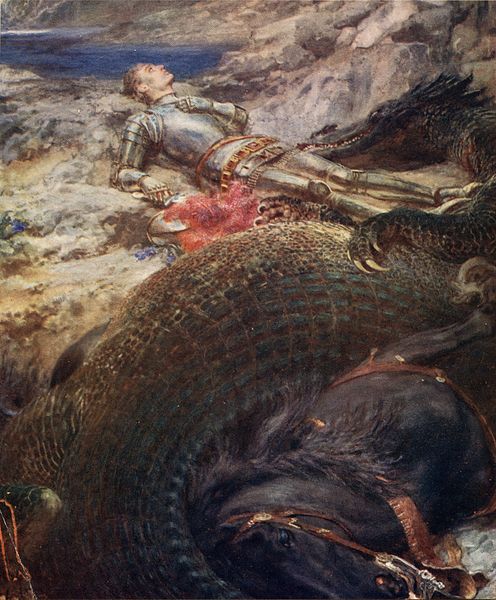I like stories with happy endings. Call me sentimental and
hire me at Hallmark, but I really don't like a story if it ends darkly. Hamlet,
for example. I mean, c'mon, Will, what's the deal? Did you have to kill
everybody in one scene? Couldn't you at least have spread it out a bit? Anyway,
before my Shakespeare ignorance shows, I'll get to the point.
What is realism, really? (Sorry, that's a question,
not a point. Bear with me.) A lot of movies and books style themselves as being
truly realistic. They don't include anything fantastic or supernatural. Their
characters don't scale Burj Khalifa in Dubai or fight off seventeen trained
assassins. The hero doesn't have laser vision and can't transform himself into
a giant robot. The characters walk, they don't run; they wear suits, not capes;
their problems are everyday, not galaxy-destroying. “Realistic” stories present
the world as normal people perceive it: sort of boring, kind of gray, and often
difficult. The characters stutter, gasp, and muddle through until the
protagonist dies or the cherry orchard is cut down. Rub some dirt in it, kid:
“Life sucks, and then you die.”
But I don't believe this is realism. Pessimistic? Sure.
Depressing? Yeah. But not realistic. The trouble seems to be that people
confuse perception with reality. They look at the world, what they can
empirically observe, and think, “Wow. This place stinks. If I want to write a
realistic story I better present the world in all its stinkiness.” So they
construct a story like one described above because that's how the world
appears. Unfortunately for so-called realists, that's not how the world
actually is. They forget to include the epilogue that begins with “But
God...”
Don't get me wrong. “Realistic,” hopeless stories tell a
true story, insofar as the parts of the story they tell are true. Life sucks
sometimes; loved ones fail us, friends leave us, and dreams disappoint us. Evil
people kill millions of innocents, and liars rule the world. I'm not proposing
that all stories be mushy, feel-good fairy tales. I really don't like Hallmark
movies. By all means, portray evil in your stories. Show just how nasty men can be. Describe the
world as the depressing place it sometimes is.
But never forget to tell a complete story. If you
want to tell a realistic story, don't forget to include a realistic ending.
I love reading the Old Testament prophets. At least, I love
coming to the end of their books. For pages and pages, Amos prophesies against
the nation of Israel. God is going to destroy his people for their injustice,
their pride, and their lack of repentance. God says, “Strike the tops of the
pillars...Bring them down on the heads of the people; those who are left I will
kill with the sword. No one will get away, none will escape.” When the Lord of the universe says no one
will escape, you can bet that no one will escape. Life isn't looking so great
for the Israelites, to say the least. Then, just when all hope seems lost, God
ends the book with this: “In that day I will restore David's fallen tent. I
will repair its broken places, restore its ruins, and build it as it used to
be...The days are coming...when the reaper will be overtaken by the plowman...I
will bring back my exiled people Israel; they will rebuild the ruined cities
and live in them.” This is the refrain throughout the Bible. Men are fallen and
sinful, but God always restores in the end. God takes evil and turns it to
good. Despite what we can see with our limited perspective, this is the way the
world truly works. There will always be restoration.
If you haven't read Crime and Punishment yet, you
should. It is considered one of the greatest novels of all time, and rightly
so. Its characters are engaging, its descriptions are vivid, and its plot is
riveting. But perhaps its strongest characteristic is that Dostoevsky's novel
is truly realistic. He does not sugar-coat the evil in the world, but neither
does he leave his characters without the hope of restoration. Crime and
Punishment is dark and gritty, but a ray of hope shines in the epilogue.
The novel speaks to what humans know to be true: evil is strong and terrible,
but good will always triumph.
I like stories with happy endings because I think they're
more realistic than hopeless ones. They resonate with me because I know that
they are true. There is always hope, however small, and a good story points me
to this reality.



